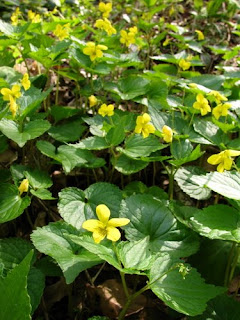
Motou Station on the Watarase Keikoku Railroad.
This area used to be famous for its copper mine.

Only one car train.
You can enjoy the riverside view from JR Kiryuu Station.

Watarase river near Matou Station.

Wild monkey found near Motou station.

We took a bus from Matou Station.
And here is the entrance of Botanical Gardens, Nikko of Graduate School of Science, The University of Tokyo.

Rhododendron metternichii var. pentamerum (Azuma Shakunage).

Rhododendron keiskei (Hikage Tsutsuji).

Ficedula narcissina (Kibitaki).

Cyanoptila cyanomelana (Ooruri).

Yuba (soybean card) Soba noodles at Nikko.

JR Nikko Station. (In front of this station, most of the shops were closed. On the contrary, near another Nikko Station on Toubu Line area, there were quite a few shops and people.)


























































